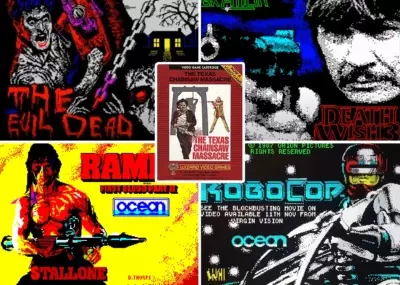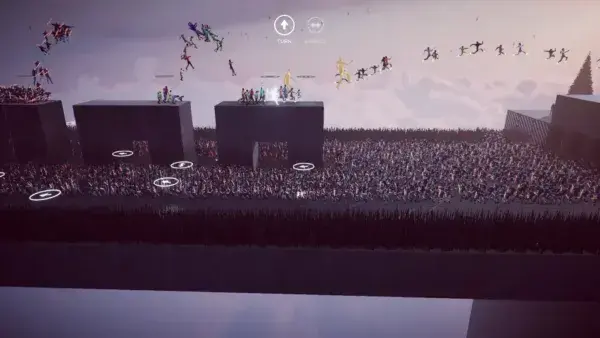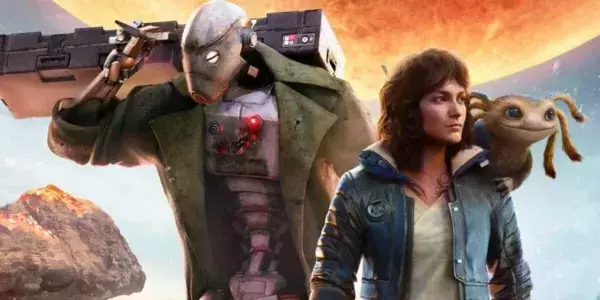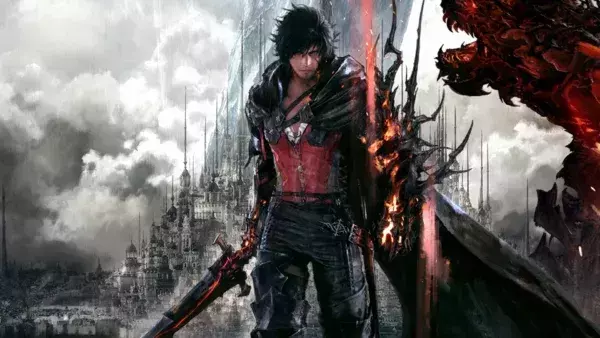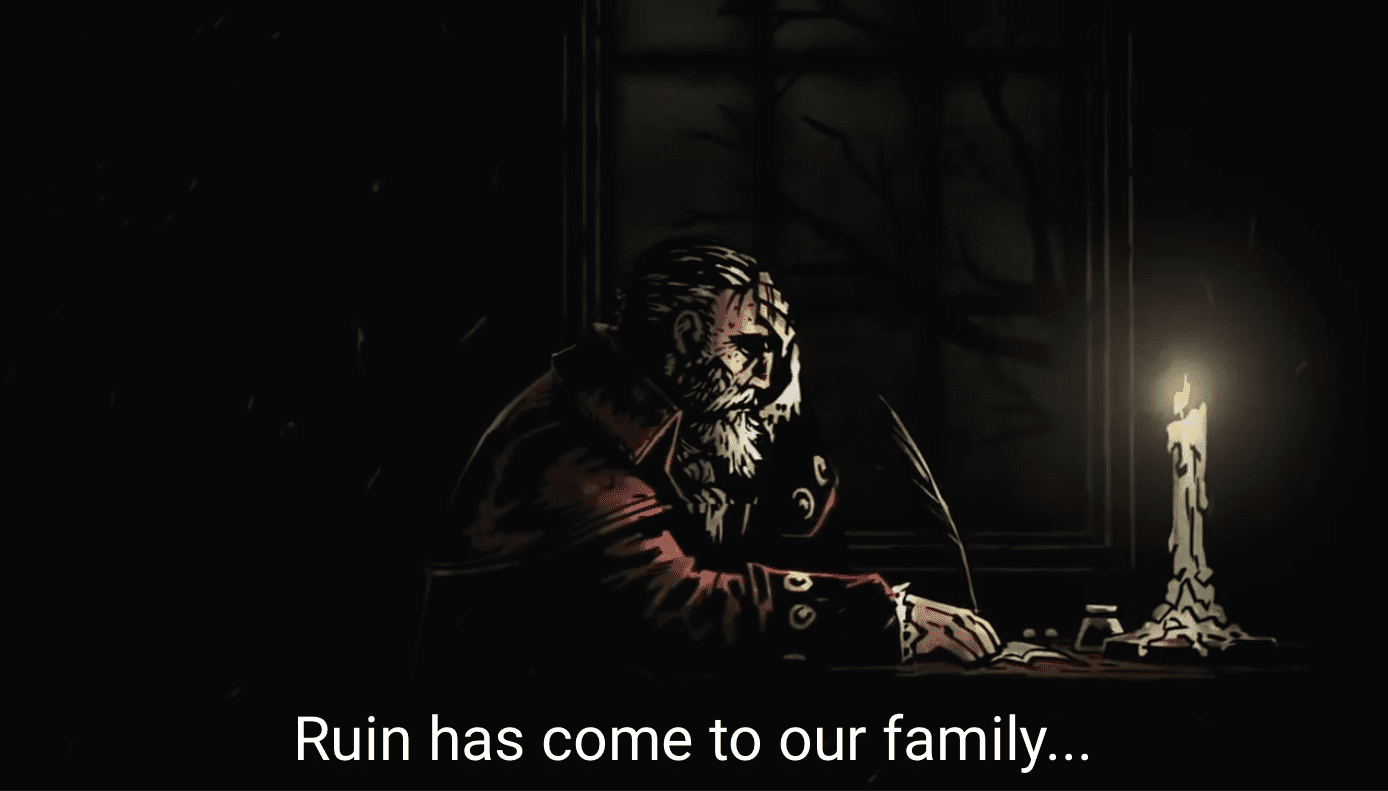
No stranger to world-building, Casey Lucas-Quaid is a vastly experienced wordsmith who’s spent eleven years in games as a writer, editor, and community manager, recently on titles such as Magic: The Gathering, Darkest Dungeon 2, Mini Motorways, and Mini Metro.
As we spoke about her expertise, the most exciting wisdom she shared were the tidbits relating to lore: the additional information about a game’s world which fills out the illusion of an expansive, lived-in fiction. When we think of lore, most of us recall audio or text that comes along with collectables, such as audio logs and notepaper left behind in gaming’s post-apocalypses, or Lara Croft’s interpretation of an old coin she just found. But Lucas-Quaid mentioned neither of these.
Instead, Lucas-Quaid’s examples of lore delivery were weapon descriptions, level-select screens, narration voiceover, battle cries, and map annotations. What struck me is that all of the above are baked, without pause, directly into game-critical actions such as fighting, choosing equipment, or navigating. The lore is presented if and where it is relevant, not as a separate entity to be read for its own sake. As a writer who, despite my best intentions, skims most games’ lore-dumps (Skyrim’s books, Destiny’s grimoire), I found this quite the insight. So, assisted by Lucas-Quaid’s own words, let’s dig in!
FLAVOUR
Lucas-Quaid spoke of flavour text as any creative writing “that isn’t part of the game’s story or narration”, and continued “think about any game you’ve ever played where skills, items, and map locations all had blurbs”. She described how flavour text is, at its core, meant to be informative, not purely decorative; it should give a sliver of context that communicates something play-relevant, from the fact that a certain weapon is uncannily lucky (e.g. it has a high crit rate) to simply conveying atmosphere.
The important part here is that, again, the lore is in service of gameplay, not an end in itself. Therefore, she says, “flavour text necessitates a balance between tone, entertainment, and clarity”. While keeping that equilibrium and the text’s ultimate purpose in mind, she describes writing flavour text as “your opportunity to tell a bite-sized story via implication. Your goal is to drop a tasty crumb for the player that will inspire them to imagine more”, which is an exciting proposition for a keen storyteller: it’s microfiction!

Casey Lucas-Quad: wrier, world-builder, and owner of fabulous hats.
So that’s the theory of flavour text, but what about execution? Luckily, Lucas-Quaid has tips for this, too. She urges us to draw on perspectives on the game’s world and events that aren’t spotlighted in the main narrative. For example, if your game is about knights doing knightly things, perhaps your armour description could be from the perspective of the servant who last fitted it on his liege, or a peasant child dreaming of one day wearing it? These insights will “differ from the player character’s experience, and thus expose them to new perspectives”, expanding the game’s world in their minds.

Darkest Dungeon. Lucas-Quaid: “Narrators often introduce players to aspects of your world through either an omniscient narrator or a viewpoint character.”
When it comes to naming things, which is its own discipline of micro-flavour, she advises that writers “hew close to the mechanics”. Her given example of this was the Final Fantasy classic, Phoenix Down. The name is perfect for a few reasons. First, a phoenix is a rare mythical creature: this communicates it’s magical and valuable. Second, a phoenix’s best-known attribute is resurrection: this item resuscitates fallen characters. Third, a bird’s down isn’t just any feather, it’s more prized, it’s softer, it’s associated with rest and warmth: this is a potent healing item. Finally, ‘down’ is a little archaic-seeming to the modern ear, memorably fitting with the fantasy theme. Phoenix Down, she argues, is perfectly named, explaining its presence in every game.
NARRATION
Narration in games has a special status. Often, it is employed only as the very first and last spoken audio the player hears in a game. It is dramatic, sweeping, and, perhaps most importantly, brief. “War, war never changes”, grumbles the embittered narrator at the beginning of every main Fallout game, setting the tone of the anachronistic apocalypse for a few brief minutes. Lucas-Quaid explains that “narration has a different flow from writing that players will read, or dialogue that will be spoken between characters”. It’s icing which primes you for the flavouring and quality of the cake within, decorative but purposeful. Narration is tonal flavour text on steroids.
So, how to write narration in particular? Lucas-Quaid’s favourite piece of advice is to speak to the narration’s voice actor beforehand if possible, “get a feel for how they work, what they excel at. See if you can listen to their audition files – ask why they were chosen and lean into their strengths”. The VO’s performance is paramount, so writing a verbose monologue for someone who excels at gruffness is a losing game. Write something the VO will love voicing, and you’re onto a winner. Then, throw punctuation correctness out the window, “go all-in on style, don’t be afraid of bombast, of epic scale, of things that might seem too big for regular dialogue, and make every line count. The last thing players want to do when they boot up a brand new game is listen to a lengthy soliloquy that’s one-third interesting and two-thirds filler.”

Mini Motorways’ challenge: write an identifiable, inoffensive description of an entire city in a single line, while also conveying the gameplay challenge of that level.
IN PRACTICE
All in all, these theories and tips can help you write top-of-the-line, lore-enriched content which complements, rather than distracts from, the player’s engagement with a game world. I’ve been trying out these tips myself as writing warm-up exercises, and perhaps you could too!
AN EXERCISE IN UTILITY
Lucas-Quaid suggested an exercise, which I’ve adapted slightly for use as a super-fast warm-up. Try the following:
1. Pick a random image of an item from a game. Anything! The less familiar you are with it, the better.
2. Name that item. Remember to “hew close to the mechanics”!
3. Add flavour for that item in one or two lines. Use unexpected perspectives, communicate something that could conceivably relate to gameplay.
Here’s mine: a brain-interface device named Mind-Bleeder, with the text ‘It was almost as if the spies preferred I didn’t answer their questions immediately’.


